I’ve learned a lot from all you guys in the forums over the last couple years, but haven’t reached out with a question before. I’ve learned almost 100% of my woodworking skills from websites like this and youtube so I usually learn things the hard way by screwing something up.
I’m currently working on a bed frame for myself and up to this point things have gone according to plan. However today I was thinking about the upcoming finishing process, and it dawned on me that I have a lot of exposed glue lines. I personally like the striped look on the edges of birch ply, but as you guys know there can be voids that I was planning on filling with wood glue and saw dust. The problem is I was planning on staining it with a Minwax “Early American” oil-based stain, but now I’m concerned that the glue lines and voids will not absorb the stain properly and be visible. I used Titebond 2 wood glue.
So my question is: Will an oil based stain be okay for this application? Should I stick to a lighter color? Should I try using a gel based stain? should I skip the stain altogether and use a clear coat? If so what type? Any advice will help, however I want to avoid paint and I would prefer a darker finish. Thanks in advance!
I included some pictures of the platform as well as some problem areas.
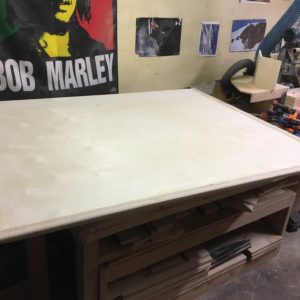
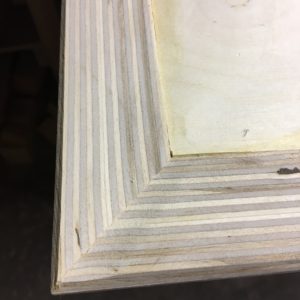
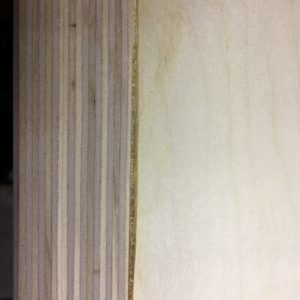
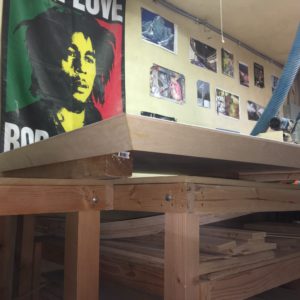
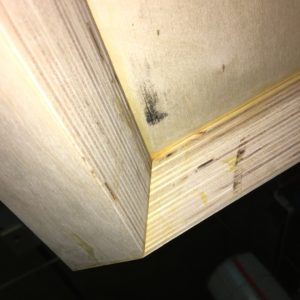













Replies
Sand or scrape glue off surfaces, the glue lines are just gonna be there. Use leftover plywood to make matching plugs for voids instead of glue and dust. You can use a pre-stain conditioner to minimize blotchiness, but test it on scrap first as it also affects the color depth.
An oil based stain likely wouldn't cause any big issues in the glue lines. But as for the voids you need to fill, if you're using sawdust and glue the oil stain will not penetrate into the wood, and it's going to be noticeable. If you do a good job gluing in a wood patch, as long as the patch is a good fit in the mortise you have cut out for it, and you clean off all the excess glue before it gets a chance to absorb into the wood, the glue joint will not be noticeable. I would still recommend a gel stain because gel stains depend less on their penetration into the wood, and act more like a cross between paint and stain. If you don't mind the stripe effect that will result from staining the edges of the plywood you're golden. To achieve a more even tone all across the bed you're making, you could try brushing a coat or two of very thin shellac before the gel stain. The stuff at Home Depot is fine in a pinch, but thin out the shellac bc it's too thick to brush right out of the can. Hope this helps
appreciate the responses really good info. Thanks
Definitely test the pre stain conditioner. I’ve found it to help in some situations, but it’s made the blotchiness worse on Baltic birch ply for me. I’d fill the voids with a wood filler that will accept stain rather than glue if you’re staining it. Once sanded, your glue lines shouldn’t be a problem otherwise.
This forum post is now archived. Commenting has been disabled